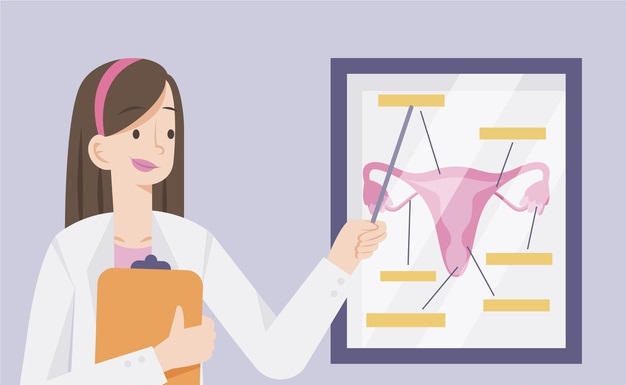Endometrial and Cervical Polyps
Endometrial polyps definition:
Polyps are the overgrowth of the endometrial glands and stroma attached on the inner wall of the uterus. They can be single or multiple and differ in size.
They can prolapse through the cervix in some cases.
They are usually benign (95%)
They can be malignant in some cases (postmenopausal women on Tamoxifen for breast cancer)
Endometrial Polyps commonly cause abnormal bleeding.
Also, Endometrial polyps are not associated with increasing the risk of abortion.
Risk Factors:
1. Treatment with tamoxifen for breast cancer
2. Obesity: BMI ≥30
3. Postmenopausal hormone replacement therapy specially with high dose of estrogen and/or a progestin
4. Lynch and cowden syndrome
Symptoms:
endometrial polyps can be asymptomatic.
When symptomatic, they might present with:
1. Bleeding between the expected menstrual periods.
2. Excessive menstrual bleeding.
3. Vaginal bleeding after menopause.
4. Infertility.
Evaluation and diagnosis:
1. Physical examination.
2. Transvaginal ultrasound.
3. sonohysterography or hysteroscopy if ultrasound findings are not certain or with postmenopausal women.
4. Sample (biopsy) is collected for further testing.
Differential Diagnosis:
Differential diagnosis includes submucous leiomyoma.
Endometrial polyps should be sent after removal for Histologic evaluation to exclude malignancy.
Growth or regression:
Endometrial Polyps may regress spontaneously in some cases with time.
Polyps larger than 1 cm are least likely to regress.
Management and treatment:
1. Symptomatic endometrial polyps should be removed whether the patient postmenopausal or premenopausal.
2. Asymptomatic polyps should be removed in premenopausal women if:
– higher risk for endometrial hyperplasia or malignancy.
– Multiple polyps
– Prolapsed polyp
– Size >1.5 cm
– Causing infertility
3. Women with recurrent polyps: It is advised to repeat removing the polyps and use Progesterone releasing IUCD.
Polypectomy:
Surgery under hysteroscopy to remove the polyps.
The complications are rare but include:
1. Uterus perforation
2. Hemorrhage
3. Bladder or bowel injury
4. Infection
5. Cervical laceration
Endometrial polyps recurrence rate:
Endometrial polyps usually do not reoccur but they might.
Cervical Polyps
They occur during reproductive age specially after age 40.
They can be single or multiple and typically less than 3 cm in diameter.
They are usually discovered accidentally during a routine pelvic exam or pap smear.
Most cervical polyps are asymptomatic but they may present with:
1. Heavy menstrual period
2. Foul or excessive vaginal discharge
3. Bleeding after intercourse
4. Bleeding after menopause
5. Abdominal cramps
Malignant cervical polyps are rare.
The causes of cervical polyps are not known but they might be due to chronic inflammation.
They should be removed if:
1. Symptomatic
2. Size ≥3 cm
3. Look atypical
4. suspicion of malignancy
Removing cervical polyps:
Cervical polyps are usually removed in the office, but they might be done in the operation room in some cases.
Also, polyps after removal should be submitted for histological evaluation to exclude the possibility of malignancy.



